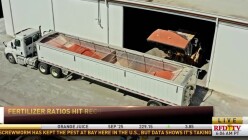Imports
“This flight between Israel and Iran had a very direct relationship to the urea market.”
“We’ve got to keep our head up... there will be opportunities as we move forward.”
Here are the top agriculture news headlines from RFD-TV News today (Thursday, Feb. 27, 2025) and the top trending stories on RFD-TV News.
























